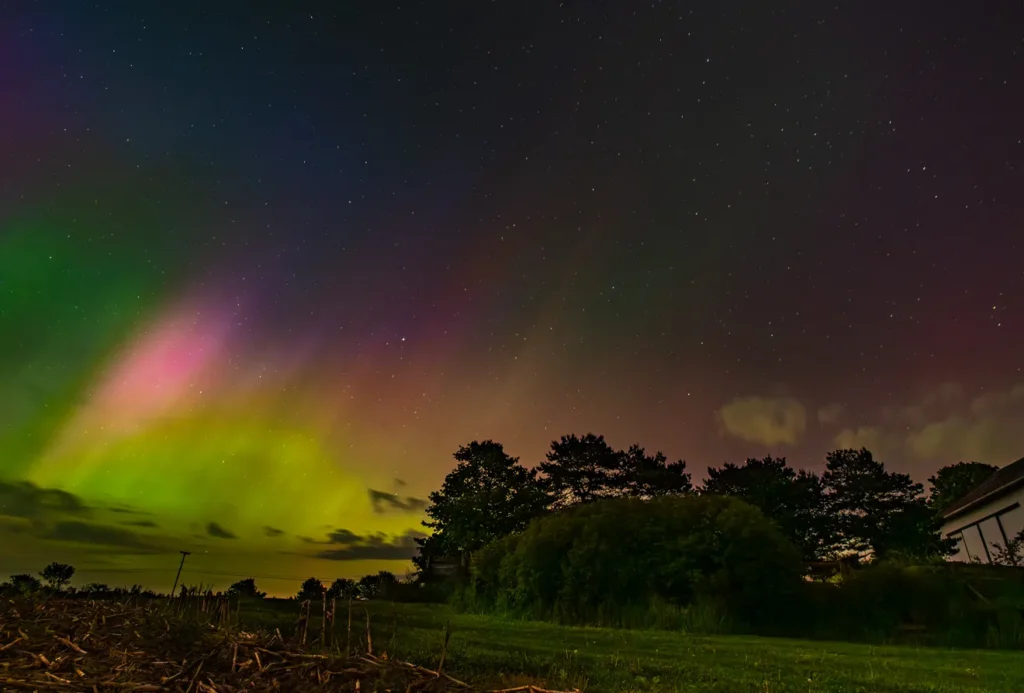The Lansing area is anticipating another opportunity to witness the awe-inspiring phenomenon of the Northern Lights, although the certainty of their appearance remains uncertain. Space weather forecasters suggest the possibility of a dazzling display akin to the one witnessed around May 10th.

While initial forecasts raised hopes for a spectacle on Friday night into Saturday morning, widespread sightings did not materialize. Now, attention is drawn to a cluster of sunspots, previously responsible for the captivating aurora of May 10th, which has rotated back into view of the Earth. This could potentially pave the way for another remarkable display, according to the federal Space Weather Prediction Center in Boulder, Colorado.
In simplified terms, these sunspots spur solar storms that could instigate auroras visible on Earth. However, the reliability of such forecasts remains uncertain, as demonstrated by recent disappointments. Leading experts caution that it is premature to confirm the likelihood of this week’s potential display.
The occurrence of the phenomenon hinges on two primary factors: the prevailing conditions set by the sunspots and, if favorable, the absence of cloud cover during nighttime hours, as Northern Lights are typically observable only under clear skies.
Observing the display in the Lansing area may prove challenging on Monday or Tuesday nights due to anticipated heavy cloud cover, as forecasted by Nathan Jeruzal, a meteorologist with the National Weather Service station in Grand Rapids. However, Wednesday through Friday nights are expected to offer clearer skies, presenting optimal viewing opportunities for residents.
With June 6 marking a new moon, the skies will be exceptionally dark, potentially enhancing the vibrancy of any auroral activity. Shawn Dahl, a senior forecaster for the Space Weather Prediction Center, remains hopeful for a new display sparked by the sunspots, acknowledging the inherent challenges in forecasting events originating millions of miles away.
While conditions seem favorable for future aurora displays in the coming years, predicting their exact timing remains elusive. Experts emphasize the multitude of uncertainties inherent in such forecasts, underscoring the limitations of current scientific understanding in predicting these celestial events accurately.


